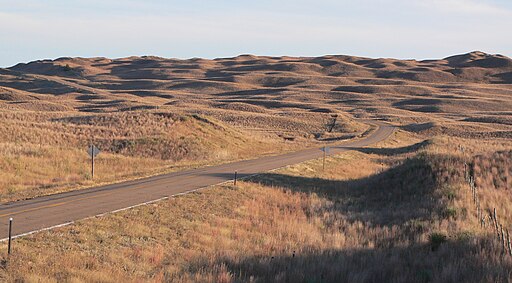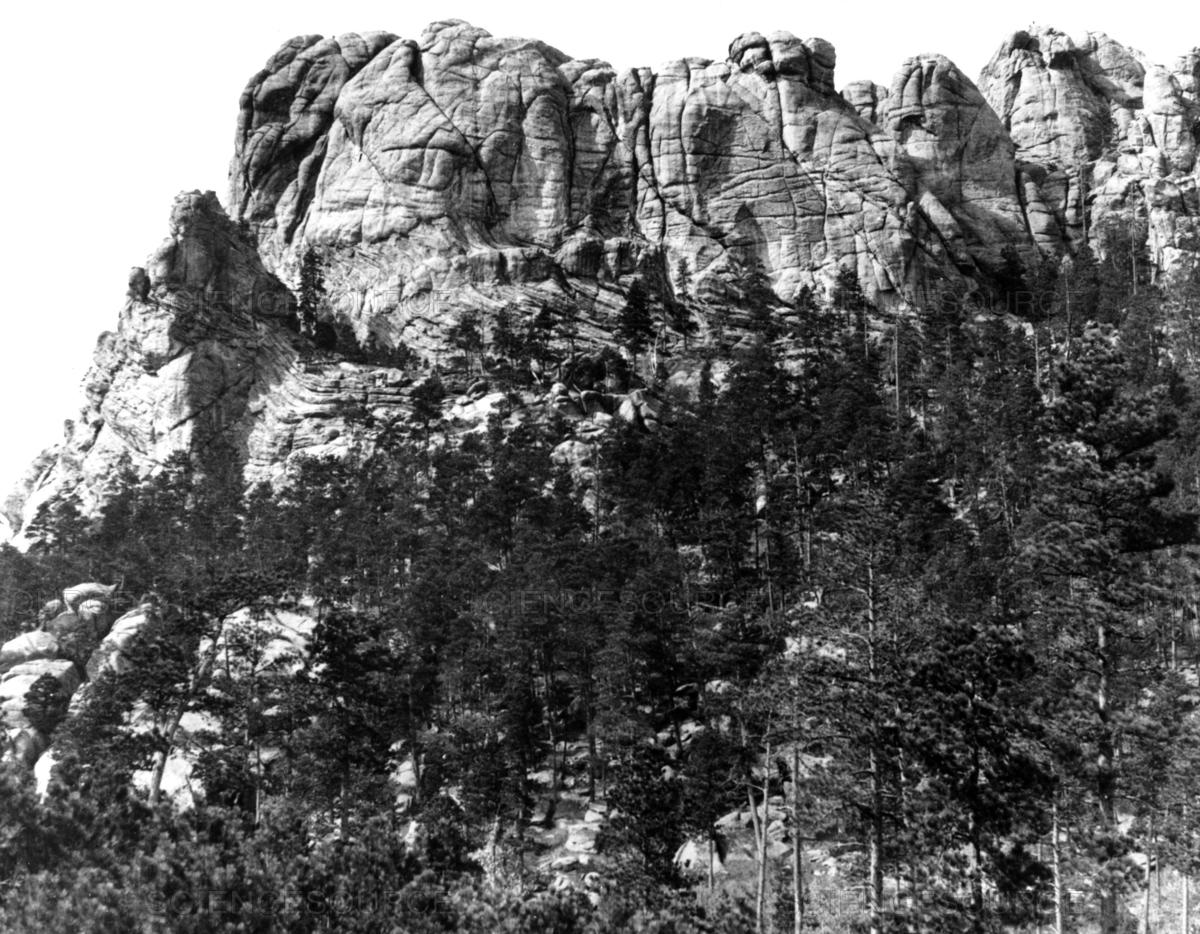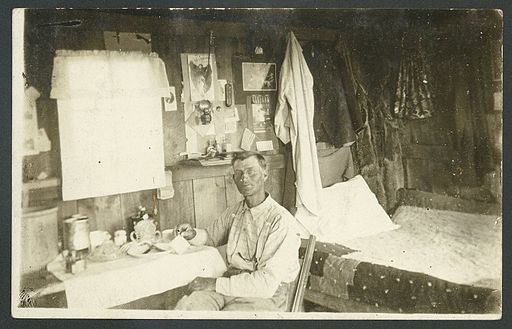This memoir of “proving up on the Great Plains” will have
lightning strikes of connection for anyone who spent their early years in what
was for them a place of remote isolation. For such a young person, life is elsewhere.
Moving out to find where they belong is a mission that has to wait for the
independence that comes with adulthood. Yet, once having escaped, there is the
unexpected yearning to return. Among many things, this book is about that.
For Garrett-Davis, South Dakota is that place. Traversing it
in memory from Hot Springs to Pierre to Sioux Falls, he revisits the stages of
discontent that any punk rock-loving kid would have endured there in the
1980s-90s. Now, living in New York, he finds himself haunted by the plains and
prairie. And he reimagines the story of his young life as part of a pattern of
coming and going that has marked this land since its first inhabitants.
Survival. Forty
years his elder, I’m no punk rocker. And the 1950s strategy for survival for a
Nebraska farm boy was not resistance to authority and social convention, but
accommodation. Yet the results were the same. I became bicoastal at the first
opportunity, with many years in New York, and many in Los Angeles.
 |
| Sandhills, Nebraska |
Yet the plains of Nebraska do not stop haunting me. While
I’m writing this, the wallpaper on my laptop is a photo of a deserted stretch
of Sandhills highway with a scattering of black angus in the middle distance.
The particular story of the Plains, home of cowboys, ranchers, Indians,
homesteaders, and bison, remains a personal frame of reference fifty years
after I left.
Garrett-Davis retells a similar story, blending it with an
account of his own brief span of years, because that seems to be what a person
from out there does. The land is too vast, the sky too big, and frontier
history too recent to leave you untouched. He finds a kindred spirit in Willa
Cather, the New Yorker from Red Cloud, Nebraska, whose years in that small town
on the Republican River appeared again and again in her best fiction.
 |
| Six Grandfathers (later Mt. Rushmore), 1905 |
Illusions. Drawing
an analogy to the ghost dances of the western tribes, he observes how the
Plains have generated such profound illusions about the West. The outpouring of
western fiction, movies, photography, and art over the last 100 years has tried
to fix those illusions in words and images. But the subject won’t hold still
for its picture. As Garrett-Davis points out, it’s always in motion, coming and
going.
There’s the myth of the homesteader, for instance, who got
his 160 acres and proved up, eventually becoming a successful participant in
the vision of a Jeffersonian extension of the East. As the myth has it, there
is an unbroken evolution from those hardscrabble beginnings to modern-day
prosperity.
But the truth, Garrett-Davis observes, is that among whites
who came to the Plains, there has been a steady erosion of the population since
the beginning. It was a process accelerated by the Dust Bowl and continues
today. It’s even possible to foresee a time when large swathes of the plains
will revert to open rangeland, where the descendants of nearly extinct bison
might once again roam.
 |
| Main Street, Bison, South Dakota, c1915 |
Wrapping up. Reading
Garrett-Davis, I was reminded of a couple of other books on the subject, Ian
Frazier’s Great Plains and Debra Marquart’s The Horizontal
World. Like Frazier, the book rambles over
a wide range of topics, connecting dots in every direction as you easily can on
the grid that surveyors once laid out across this vast land. Like Marquart’s
memoir of growing up in North Dakota, it captures the loneliness of coming of
age “in the middle of nowhere.”
In his accounts of the earlier generations of his family,
Garrett-Davis also reminded me of Mary Clearman Blew’s book about the women in
her Montana family, All But the Waltz. While
the men in his family get their due, it is the women who are memorable, like
his Aunt Ruth, whose life bridged most of the 20th century, and who fought
tirelessly for world peace, ecumenism, and racial harmony.
Garrett-Davis is currently a graduate student of history at
Princeton. This is his first book. He can be found at his website here, where
there’s a link to his blog. Ghost Dances
is currently available at amazon and Barnes&Noble and for kindle and the nook
 |
| Josh Garrett-Davis |
Interview
Josh has consented to spending some time here at BITS to
talk about writing and the writing of Ghost Dances. And I’m
happy to turn the rest of the page over to him.
Josh, who did you think of as your audience as you wrote?
That's a good question. I think I had different imagined
audiences at different times. Sometimes I thought of people I grew up around,
wanting to present myself to them differently or more fully than I believed I
was able to in person.
I also had some desire to “explain” or present where I was from
to people out on the coasts. And I suspected that there were a lot of folks
like you and me out there, who had left the Plains (or perhaps other neglected
places) and had a complex yearning for home.
I have had some vague sense of wanting to write a
next-generation Western memoir/essay for a long time. I wondered how the famous
myths (homesteaders, cowboys and Indians, etc.) had affected me and my peers in
a generation that grew up on punk rock, or for others, video games and hip-hop
and such.
Is the published version of the book closely similar to
your first draft, or was the revision process extensive?
I initially imagined that the book would be about 5% memoir,
but that element emerged more and more as I wrote the other parts. I rewrote a
whole lot—there were probably three years between when I first finished a draft
and when it was published.
 |
| Aberdeen, Dakota, 1883 |
Was there material you wanted to include in the book but
decided not to?
Memorably, I had a short, weird passage in which I tried to
turn the Rev. Fred Phelps’s hateful style of rhetoric back on him; but from my
editor’s more objective perspective it was too jarring and undercut my
reliability as a narrator.
What have been the most interesting reactions to the book
so far?
I have been amazed how many people I've met or heard from
who live far outside the Plains but who were born there, or whose parents were
from there. I don't have any census records to prove it, but I've gotten more
anecdotal evidence for my idea that “coming and going” are the norm for Plainsfolk
(especially non-Indians).
How did you settle on the title for the book?
For a long time I had been using the provisional title
"Pratincole," which means "prairie dweller" but is the name
of an African bird (this is still the title of the epilogue). I never liked it
all that much—it felt misplaced and too obscure. But I had a couple of chapters
titled "Ghost Dances," and one perceptive reader just told me,
"That's the book’s title. Just use that."
What were the creative decisions that went into the
book’s cover?
I had heard many horror stories of authors hating the design
their publisher came up with for the book. All I suggested to them was that I
liked the iconic images on a lot of Plains books (tan grassland with a big sky
above and a buffalo in the foreground), but I wanted it to have some sort of
modern twist. I loved the design and instantly said "Yes!"
 |
| Sylvan Lake, South Dakota, 1901 |
What current historians of the West do you find the most
illuminating?
I like the books that give you whiplash with a story or
interpretation that's so surprising. I'm thinking of Susan Lee Johnson's book
about the California Gold Rush, Roaring Camp, which portrayed the early years in the southern part of the Gold Rush
as an international, cosmopolitan bustle rather than just a few white guys with
beards and dirty hats panning in the creek.
I also liked Pekka Hamalainan's Comanche Empire, which flips the perspective on the “Comancheria”
around so that when the Comanches are raiding Spanish or Anglo horses we could
actually regard this is imperial domination by a superior power. He might go a
little too far in his reinterpretation, but that change of vantage point is
invaluable.
Are there any kinds of historical research techniques
today you find especially exciting?
I’m starting to get interested in using sound recordings
from the late 19th and early 20th centuries as windows into the past.
What do you expect to be your area of focus in future
research?
See the previous question. That said, I have to focus on
studying for my qualifying exams before I really start my own work!
Do genre westerns like Louis L’Amour’s serve readers’
knowledge of the West in any way?
Certainly, genre Westerns can give you a pretty good idea of
what it was like to live in the West in the period they cover—especially the
day to day experiences like weather, fatigue, landscape, etc. I think
historians sometimes zoom out too far and just try to explain things without trying to capture the feeling of
“being there.”
 |
| Claim shack, Quinn, South Dakota, c1905 |
In the end, though, Westerns cover a very short moment in
Western history, and largely in a way that not many people actually lived. In a
way, they do a disservice to the poor cowboy by mythologizing him beyond
recognition. But at the same time, they're arguably our most important national
mythology, and they don't seem to be going anywhere!
Are there any writers of historical fiction set in the
West that have held your interest?
Well, Wallace Stegner, of course. I assume by historical
fiction, you mean books set in the 1870s and 1880s, but I really love Ivan
Doig's portrayal of 1930s Montana in Bucking the Sun, and Louise Erdrich's novels about 20th-century
North Dakota.
I've been loving the strange new Western movies that have
come out in the last decade, too: The Assassination of Jesse James by the Coward
Robert Ford, the new True Grit, the Polish brothers' movie Northfork, and others. My wife tells me that Mary Doria
Russell's recent novel about Doc Holliday was excellent, but I'll be stuck
reading history for the next few months!
What writers of the West, living or dead, do you consider
undeservedly unknown?
I only learned about Wright Morris, your fellow Nebraskan, a
couple of years ago. His photo-text hybrid books are so compelling and
fascinating! I wish they were back in print. And I wish people outside of
Nebraska still read Mari Sandoz.
What can your readers expect from you next?
It will be history, likely somehow Western, but it will be
quite a few years!
Thanks, Josh. Every success.
Photo credits: Wikimedia Commons
Coming up: Saturday music: Hank Williams & Anita Carter

The land gets into you and cannot be pried away, drunk away, or slept away. The land abides.
ReplyDeleteEnjoyable interview!
Well said.
DeleteThank you for introducing me to this fine book and author, and sharing his and your insights. Long ago I came to love the Montana plains far more than the storied beauty of its western alpine reaches. And I wrote about all that in a contemporary novel that expressed my love of the plains, heart and soul. I receive mailings from the American Prairie Reserve, which is devoted to preserving and restoring the plains.
ReplyDeleteGarrett-Davis devotes a chapter or two to prairie restoration, a subject far more complex than the average reader would imagine.
DeleteRon, thanks very much for the book review and the interview with its author. Your interviews provide a keen insight into the American West and I especially like the historical aspects of the Q&As. I wonder if modern writers of the western genre are looking anew at the way the west really was and not the way we know it to be. I'm referring to Garrett-Davis' remark about "disservice to the poor cowboy by mythologizing him beyond recognition." Can we expect a less glamourised and a more realistic cowboy in westerns of the future?
ReplyDeleteThanks for the comment, Prashant. Realistic portrayals have fared poorly in the marketplace. A new generation of readers might welcome more realism, but there's a hard core holding fast to the myth.
Delete